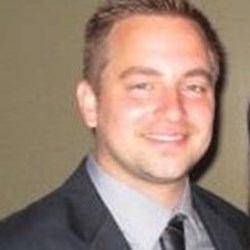5 Tips For Future-Proofing Your Clients' Virtual Environments
By James Dyckowski, Senior Sales Solutions Engineer, StorTrends

Here are five tips for helping you future-proof your clients’ virtual environments:
- Seek Peer Advice. There is little substitute for hands-on experience and knowledge. Seek and listen to peer advice on what products have and have not worked for them across their clients’ physical, virtual, and cloud environments. Peers will have a real-world perspective on how effective everything from software to storage, servers, and hypervisors have been in helping them to address common issues, as well as how easy and intuitive they are to deploy, integrate and manage. Of course, keep in mind that all companies and challenges are not created equal — a product may work perfectly in one environment, but be quite lacking in another. Seeking more than one opinion is ideal.
- Understand The Data. Understanding the data can start at simply knowing what applications are being run in the virtualized environment. Some end-users are more heavily focused on the service that they are providing versus the company’s internal infrastructure. A database environment is a lot leaner on what data and how it accesses data in comparison to a centralized deployment with everything from mail, file shares and CRMs (customer relationship management systems), to backups.
- Understand And Accept Hardware Limitations, And Then Plan Accordingly. Bottlenecking … Accept that hardware has limitations and that those limitations must be understood. Everything has a bottleneck. It is critical to forecast when and where the virtualized environment will hit this bottleneck. And then, to plan how best to resolve it from both an efficiency and cost standpoint. For instance, network throughput and disk I/O are the two most common bottlenecks. A backup instance may max out the throughput of your network for 15 or 30 minutes in the middle of the night. Can you double the throughput and reduce this time down to 7 or 15 minutes? Yes. Is it cost effective to do this when two 10 GbE are currently in place and you need to add that many more ports from the storage through to the backup server? Probably not. Now, if the network bandwidth is full at 11 a.m. … Yes, you need to make it happen. Find and consider all of the potential bottlenecks when looking at the virtualized environment. (There are actually products that you can download and run for free that provide an assessment of an environment’s performance, capacity and throughput requirements, as well as identifies pain points, enabling you to make more informed decisions and recommendations.)
- Don’t Be Sold On A Name. If you are looking at a big name product, keep in mind that just because it has the big name doesn’t mean it’s the best product. Sometimes the big name is due to a huge marketing budget promoting a so-so product. Make sure that the vendor stands behind its product and allows a proof of concept (POC). That POC will give you peace of mind and will ensure that the product will fit your clients’ virtualization goals — from performance to functionality to price.
- Support Shouldn’t Be Just Another Revenue Stream. There are so many moving pieces in all virtual environments — trust me, you and/or your client will need to call support at some point. Save yourself some grief. Vet the product and the company ahead of time. Again, talk to your peers — what experience have they had in regards to support from specific vendors? Talk to the vendor’s engineers and support. Make sure your vendor doesn’t view support as just another revenue stream. It should be a company backing their product’s quality and making sure that the product is doing exactly what they promised.
Senior Sales Solutions Engineer, James Dyckowski, has more than eight years of technology experience in storage, RAID, virtualization (VMware, MS Hyper-V, Citrix and RHVS), SAN, NAS, Linux and DB applications (MS SQL, Exchange and Oracle). Dyckowski has spent the past eight years with American Megatrends, Inc.'s StorTrends Data Storage Division. Dyckowski is responsible for pre-sales support, solutions designs, installation and post-sales support for StorTrends SAN and NAS Products. Dyckowski received a bachelor’s degree in computer science from the University of Georgia and his Master of Business Administration degree from Shorter University.
